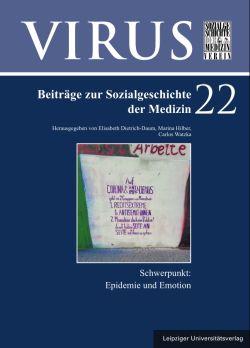
VIRUS Band 22, pp. 047-066, 2023/12/28
Schwerpunkt: Epidemie und Emotion

An attempt to get closer to the emotional world of ordinary people before and during the cholera epidemic of 1831/32 in the Duchy of Styria reveals many ambiguities and contradictions. Depending on the social location, regional origin, experiences and probably also individuality, different characteristics emerge. It is generally noticeable that the crisis often brought a reinforcement of already existing conflicts and rejections, be it exclusions of marginalised groups and minorities in the wake of blame or the impression of being pushed back and neglected in the province vis-à-vis the central authorities in Vienna. There was also a certain adherence to traditional methods of defence, even if they proved ineffective; this illusion of stability probably provided a certain security. The dominant feelings in dealing with the disease were, of course, fear and worry. The paradoxical impression here is that fear was aroused on the part of the authorities as long as cholera had not yet reached the country and only vague images of horror were circulating. On the contrary, when the disease actually made its appearance, authorities tried to calm and appease the situation again, which could go as far as outright suppression. The bottom line is that the cholera of 1831/32 hardly imprinted itself into the collective memory of Styria and was soon forgotten again.
Keywords: Styria, 19th century, cholera, epidemic, crisis management, exclusion